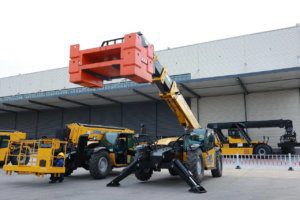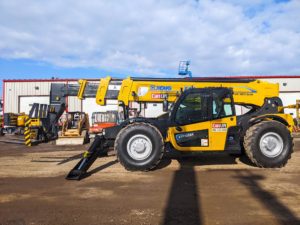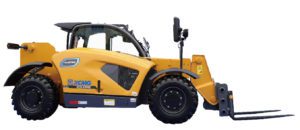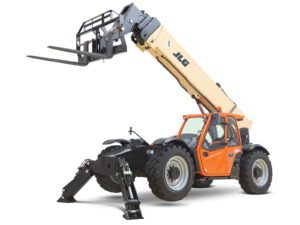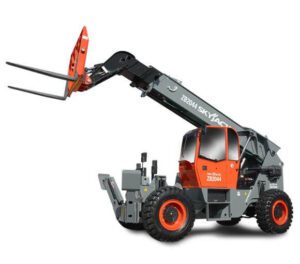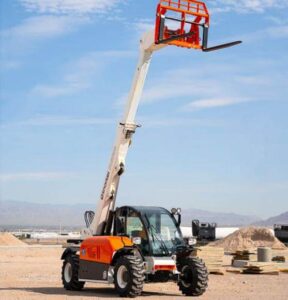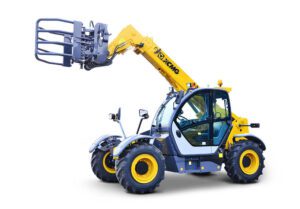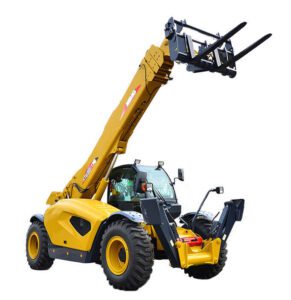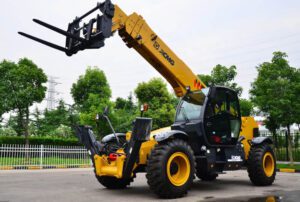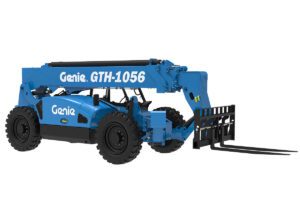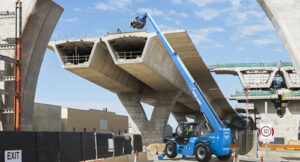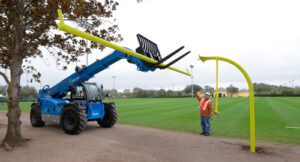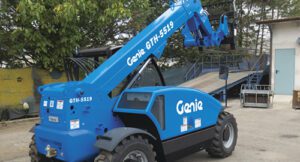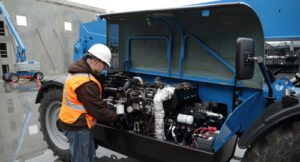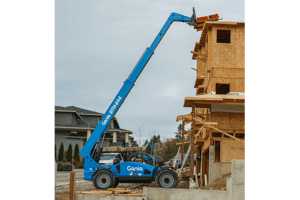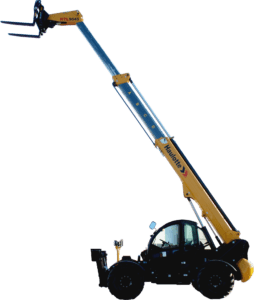Showing 1–16 of 22 results

Telehandlers
CanLift offers new and used Telehandlers for sale. Call us today at 1-877-338-5438 or contact us using the form below – operators are standing by and we ship worldwide!
QUICK QUOTE
Your privacy is very important to us. We do not sell, share, or
distribute any of your personal information with any third parties.
Please read our privacy policy for more information
Telehandlers for Sale from CanLift
A full size or compact telehandler is an essential machine for almost any job site. Being able to bring an entire load of materials or supplies close to where crews are working allows your team to work much faster and more efficiently, saving everyone time and money. Having things like joists lifted to the top floor for installation, rather than manually lifting, saves even more.
Contact CanLift to discuss the options to lease or buy a telehandler.
LEASING OR BUYING A TELEHANDLER IN CANADA
Telehandlers greatly increase the efficiency of your workforce. The overall operating time that the machine is used over the course of a year will help dictate whether owning, leasing one is the most appropriate for you.
When buying a used telehandler for sale in Canada, it’s important to ensure it’s certified. CanLift offers a satisfaction guarantee so you can be sure you’re getting a quality machine that will last for years to come. Secondly, it’s important to get the right one for the job. Depending on the loads carried, clearance heights, operational space, and other factors, the size, price, and availability of these machines will vary greatly. Every telehandler for sale in Canada has published range-of-motion charts to help you determine which model will be the most appropriate.
FULL SIZE AND COMPACT TELEHANDLERS FOR SALE
The telehandler is popular because of its functionality and versatility. It comes in very large to very small capacities (as well as regular to compact telehandler designs) so units are optimized for all different tasks on a work site. They are especially useful because of the weight that they can carry but also (unlike traditional forklifts) because of their ability to reach up and over obstacles.
The compact telehandler offers even more versatility, as it can work in highly confined spaces where other machines would not fit. CanLift has a range of styles and models, including compact telehandlers for sale.

Satisfaction is guaranteed.
Contact our sales and rental team today for a free, no-obligation quote.
Frequently Asked Questions about Telehandlers
What are telehandlers used for?
Telehandlers, also known as telescopic handlers or boom lifts, are used for lifting and positioning heavy materials in construction, agriculture, and industry. Telehandlers offer extensive versatility through the use of various attachments for tasks like loading, working at elevated heights and operations in rough terrain. Telehandlers are indispensable machines widely utilized across various industries such as construction, agriculture, and landscaping. Telehandlers’ versatility lies in their ability to perform a multitude of tasks, including lifting, moving, and placing materials with precision and efficiency. In construction, telehandlers excel in tasks like loading and unloading heavy pallets, maneuvering materials across rough terrain, and reaching elevated heights that traditional forklifts cannot access. In agriculture, telehandlers facilitate tasks such as stacking hay bales, transporting feed, and handling bulky farm equipment. Landscapers benefit from telehandlers’ ability to move soil, mulch and plants with ease, while also assisting in the installation of irrigation systems and landscaping features. With their adaptability and robust performance, telehandlers play a pivotal role in enhancing productivity and streamlining operations across various industries.
How far can telehandlers reach?
Telehandlers typically have a horizontal reach ranging from around 15 feet to over 70 feet. Some specialized models reach up to 100 feet or more. The exact reach capability of a telehandler depends on the specific model and manufacturer. Telehandlers are well regarded for their impressive reach capabilities. Telehandler’s extensive reach enables access to difficult-to-reach areas on construction sites and allows easier navigation around obstacles and handling materials with increased precision. Whether it's lifting heavy loads to elevated floors of a building under construction or placing materials across uneven terrain, telehandlers excel in providing reliable performance and enhanced efficiency. Telehandlers extended horizontal and vertical reach capabilities make them indispensable assets in various industries where reach and maneuverability are required. It's important to consult the specifications of a particular telehandler model to determine its exact reach capacity and ensure it is appropriate to match your requirements.
Are telehandlers easy to operate?
Telehandlers are typically relatively straightforward to operate and designed with user-friendliness in mind, though their complexity will depend on the specific model and manufacturer. Proper understanding of telehandler safety protocols and adherence to manufacturer guidelines are essential to ensure safe operation. Modern telehandlers offer intuitive controls and ergonomic features for enhanced operator comfort and efficiency. Telehandler controls are typically arranged logically, with ergonomic consideration given to joystick placement and visibility of gauges and indicators. Safety features–such as stability systems and load-sensing technology–contribute to smoother and safer operation. Proper telehandler training is essential to ensure operators understand the machine's capabilities and limitations. Safe operating practices are also important to prevent accidents and maximize productivity on-site. With the right training and experience, telehandler operators can harness their full potential to accomplish a wide range of tasks safely and effectively.
Are telehandlers forklifts?
While telehandlers share some similarities with traditional forklifts, they differ by being equipped with telescopic booms that extend both vertically and horizontally. Telehandlers tend to have greater reach and height capabilities, making them suitable for a wider range of applications, particularly in construction and agriculture. Forklifts typically have a vertical mast with forks attached to the front for lifting pallets or other loads straight up and down. They are designed primarily for vertical lifting in a warehouse or industrial setting. Telehandlers’ telescopic booms that extend forward and upward allow them to reach greater heights and distances than traditional forklifts. Telehandlers also often boast higher lift capacities and greater stability on rough terrain, further distinguishing them from traditional forklifts. While both machines are invaluable for material handling operations, telehandlers excel in applications where extended reach and enhanced versatility are essential, such as construction, agriculture, and landscaping. Understanding the unique capabilities of telehandlers versus forklifts is crucial for selecting the right equipment to meet your specific project requirements.
How much do telehandlers weigh?
Telehandlers can weigh anywhere from around 10,000 to 40,000 pounds. The weight of telehandlers can vary significantly depending on their size, capacity, and features. Check the specifications provided by the manufacturer for the specific telehandler model you're interested in for an accurate weight. Average telehandlers typically weigh between 10,000 to 40,000 pounds, Specialized models designed for heavy-duty applications or rough terrain may weigh more. The weight of a telehandler plays a significant role in its stability, maneuverability, and transportability, making it essential to consider when selecting the appropriate machine for a particular job site or application. A telehandler’s lift capacity, reach capabilities, and terrain conditions should also be taken into account to ensure you can safely and efficiently perform your required tasks. Additionally, telehandler operators should be trained to understand weight specifications and load capacities to prevent accidents and ensure the safe operation of the equipment.

